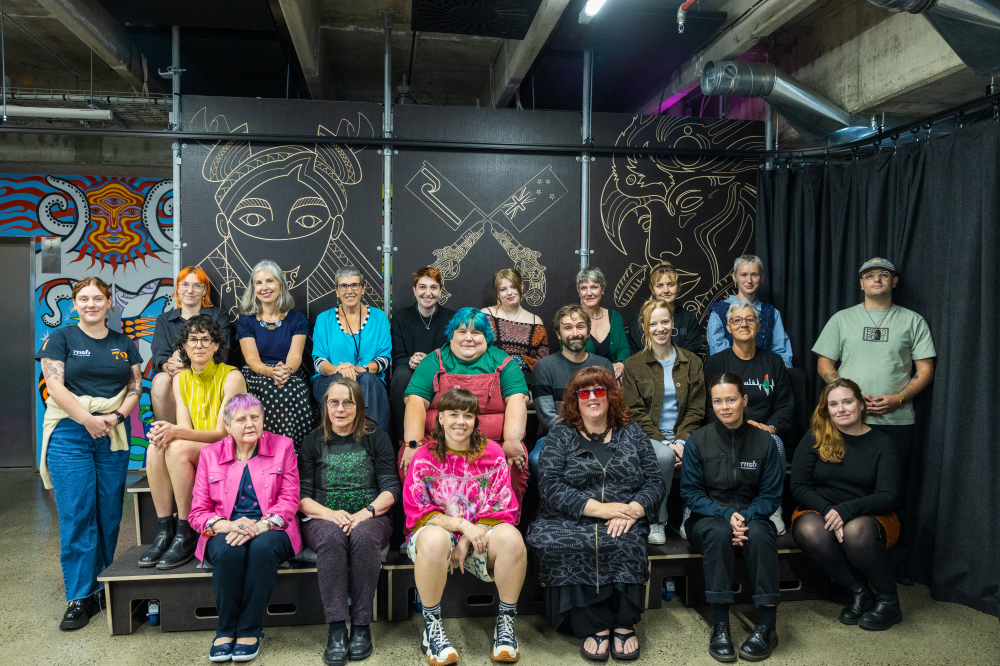Wellington writer Andi Buchanan recently led a hui at 2/57 Coworking Space for members of the Arts For All Network, igniting a conversation about fostering inclusion in creative environments.

The Arts For All Network, facilitated by Arts Access Aotearoa, supports arts organisations to increase their accessibility.
Central to Andi's presentation was an exploration of the concept of "quiet hours" – designated periods aimed at reducing sensory stimulation to accommodate individuals with sensory sensitivities. Drawing from their own experience as neurodivergent, Andi broke down the complexities, benefits and limitations of quiet hours, highlighting why the conversation is so important.
Andi's personal insight provided a valuable perspective for attendees, who included representatives from organisations such as Royal New Zealand Ballet and Te Papa. An experienced writer and Easy Read translator, Andi's passion for their work in both creative writing and Easy Read helps them consider information from diverse angles and challenge assumptions about readers' backgrounds and understanding.
Throughout the presentation, Andi talked about the positive impact of quiet hours in facilitating access to events and spaces for neurodivergent people.
But they also highlighted the need for ongoing accessibility efforts beyond designated quiet hours, advocating for proactive strategies tailored to varying sensory preferences.
"A useful starting point"
“Quiet and low-sensory hours can open up access for those who experience sensory overload and be a useful starting point for organisations working on improving accessibility,” Andi says. “But they're also highly limiting and can be exclusionary. Working on improving accessibility at all times is vital.”

Throughout the presentation, Andi addressed the challenges associated with relaxed performances and low-rules environments. Drawing from personal experiences, Andi underscored the significance of transparent communication in all accessibility initiatives.
During the presentation, the discussion was broadened to include insights and personal experiences from other neurodivergent and disabled participants.
This collaborative exchange allowed for a deeper exploration of different approaches and perspectives toward creating more inclusive environments.
Sharing practical strategies and real-life examples
By drawing on the collective wisdom of the group, participants were able to share practical strategies and real-life examples, enriching the dialogue and reinforcing the importance of community-driven solutions. This inclusive approach highlighted the value of diverse voices in shaping more accessible spaces and underscored the power of collective knowledge in driving positive change.

The conversation continued after the hui. “Some people with different access needs - especially those with low vision – started a really valuable dialogue with me and continued it out on to Willis Street after the hui,” Andi says.
“I find within disability communities, we're usually very good at being creative and communicating our way to discussions. We didn't reach any startling conclusions but it was useful to share our different needs and experiences , and think how they might interact.”
Andi urged participants to approach accessibility with sensitivity and thoughtfulness, emphasising the value of trust and consistency in creating genuinely inclusive spaces. Their presentation served as a poignant reminder of the ongoing journey toward understanding and acceptance within creative communities.
To foster truly inclusive creative spaces, Andi highlighted the importance of prioritising accessibility at all times.



